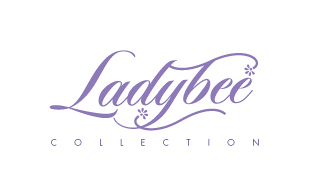Sustainable Fashion: Exactly How Eco-Friendly Garments Is Shaping the Future of Style
As the fashion business encounters increasing examination over its ecological influence, the rise of sustainable fashion uses a promising alternative that aligns style with environmental responsibility. Employing cutting-edge materials such as plant-based textiles and recycled fibers, along with advanced approaches like digital and 3D printing, designers are redefining what it indicates to be trendy in the contemporary age. Concurrently, the growing popularity of upcycling and thrift culture is fostering a shift in the direction of a circular economic climate. Just how does this activity genuinely influence the future trajectory of fashion, and what difficulties exist ahead in its widespread fostering?
Cutting-edge Sustainable Products
As the style industry grapples with its environmental influence, innovative sustainable products have actually emerged as an important service for minimizing ecological impacts. These materials not only reduce reliance on fossil gas but likewise lessen damaging chemical usage and water consumption.
In addition to plant-based materials, advancements in biofabrication have resulted in the advancement of lab-grown textiles. Mycelium leather, originated from mushroom roots, provides a flexible and eco-friendly alternative to pet natural leather. Its manufacturing leads to substantially reduced carbon exhausts and water use, making it a much more lasting alternative for stylist seeking to align with green techniques.
Recycled products are likewise acquiring traction, with polyester made from recycled plastic containers representing a considerable advancement. This innovation not just draws away plastic waste from land fills and seas but also reduces power usage compared to producing virgin polyester. Together, these materials underscore the possibility for a much more sustainable garment industry, leading the way for ecologically conscious layout and manufacturing.
Eco-Conscious Manufacturing
Structure on the advancements in sustainable materials, the style industry is also re-evaluating its manufacturing processes to better decrease ecological influence. Secret approaches consist of reducing water usage, decreasing carbon exhausts, and eliminating harmful chemicals.
Another important aspect is the decrease of toxic chemicals typically made use of in coloring and finishing fabrics. Eco-conscious manufacturers are changing towards plant-based dyes and waterless dyeing modern technologies, which not just secure neighborhood communities however additionally enhance employee safety. Developments like digital printing minimize material waste and power intake, offering a cleaner alternative to traditional techniques.
Moreover, transparency and traceability have become critical. With the improvement of blockchain modern technology, companies can currently provide thorough understandings into their supply chains, making sure ecologically friendly and honest methods at each step. This transparency builds consumer depend on and motivates brands to maintain high sustainability standards. As the need for eco-conscious products expands, suppliers are urged to innovate, guaranteeing that the future of style is both stylish and lasting.
The Rise of Upcycling
Upcycling, a transformative technique in sustainable style, involves creatively repurposing thrown out materials right into brand-new, top quality products. This ingenious approach not just reduces waste yet additionally decreases the need for resources, thereby minimizing the ecological influence of clothes manufacturing. By reimagining and reconstructing existing items, developers and fashion brand names are able to infuse originality right into their collections while advertising environmental obligation.

Furthermore, the upcycling movement has equipped independent developers and little businesses, who often lead in innovation as a result of their agility and creativity. By exploiting on the bountiful accessibility of unused products, these entities contribute to a round economy, demonstrating that style can be both trendy and sustainable. Via upcycling, the market takes significant strides in the direction of a more responsible and conscious future.
Thrift Society's Effect
The burgeoning second hand society considerably improves the landscape of sustainable style, emphasizing the significance of mindful usage. This cultural shift urges consumers to accept have a peek at this site pre-owned apparel, therefore decreasing the need for new garment manufacturing and reducing ecological impact. Second hand buying not only extends the lifecycle of clothes but likewise lowers the carbon impact connected with production, carrying, and disposing of apparel.
A vital aspect of second hand society is its democratization of fashion. By providing a wide selection of designs from various ages at affordable costs, second hand stores make fashion easily accessible to a broader audience. This ease of access promotes a sense of uniqueness and imagination, as customers mix and suit unique pieces to curate individualized closets without adding to the rapid style cycle.
Furthermore, second hand society advertises circularity in vogue, aligning with the principles of a round economic climate. By recirculating garments, the cycle of waste is disrupted, and resources are conserved. This practice supports a change from a straight "take-make-dispose" design to a much more sustainable structure. As more customers and developers embrace thrift culture, the style sector is forced to adjust, go to these guys incorporating sustainable methods to fulfill the expanding demand for eco-conscious options.

Future Trends in Fashion
Fashion's development is significantly shaped by sustainability-driven initiatives and technological advancements. One prominent fad is the increase of electronic style, where virtual garments can be worn in enhanced fact environments, substantially reducing fabric waste.
Additionally, the assimilation of blockchain modern technology provides new opportunities in openness and traceability, permitting customers to verify the sustainability credentials of their garments. boutique fashion. This makes certain liability in supply chains and advertises moral sourcing practices. 3D printing is yet another technology that assures to revolutionize manufacturing processes by enabling on-demand manufacturing, therefore lowering excess supply and waste
As these technologies grow, they are positioned to transform the fashion landscape, merging design with sustainability. The future of fashion, therefore, exists in a smooth blend of technology, innovation, and eco-friendly obligation.
Conclusion
The improvement of the style industry via lasting practices suggests a critical change in the direction of ecological accountability. This advancement not just aligns style with eco-friendly sustainability yet also establishes a criterion for future trends concentrated on duty and innovation.
As the fashion sector encounters increasing scrutiny over its environmental influence, the surge of sustainable fashion offers a promising option that straightens design with eco-friendly obligation.As the style sector grapples with its ecological effect, cutting-edge lasting products have actually emerged as an important solution for lowering eco-friendly impacts. Together, these materials highlight the possibility for a more lasting fashion sector, leading the way for ecologically aware style and manufacturing.
Building on the innovations in sustainable materials, the fashion sector is additionally re-evaluating its manufacturing procedures to better minimize ecological influence. boutique fashion.Upcycling, a transformative technique in sustainable style, includes creatively repurposing discarded products into new, top quality products